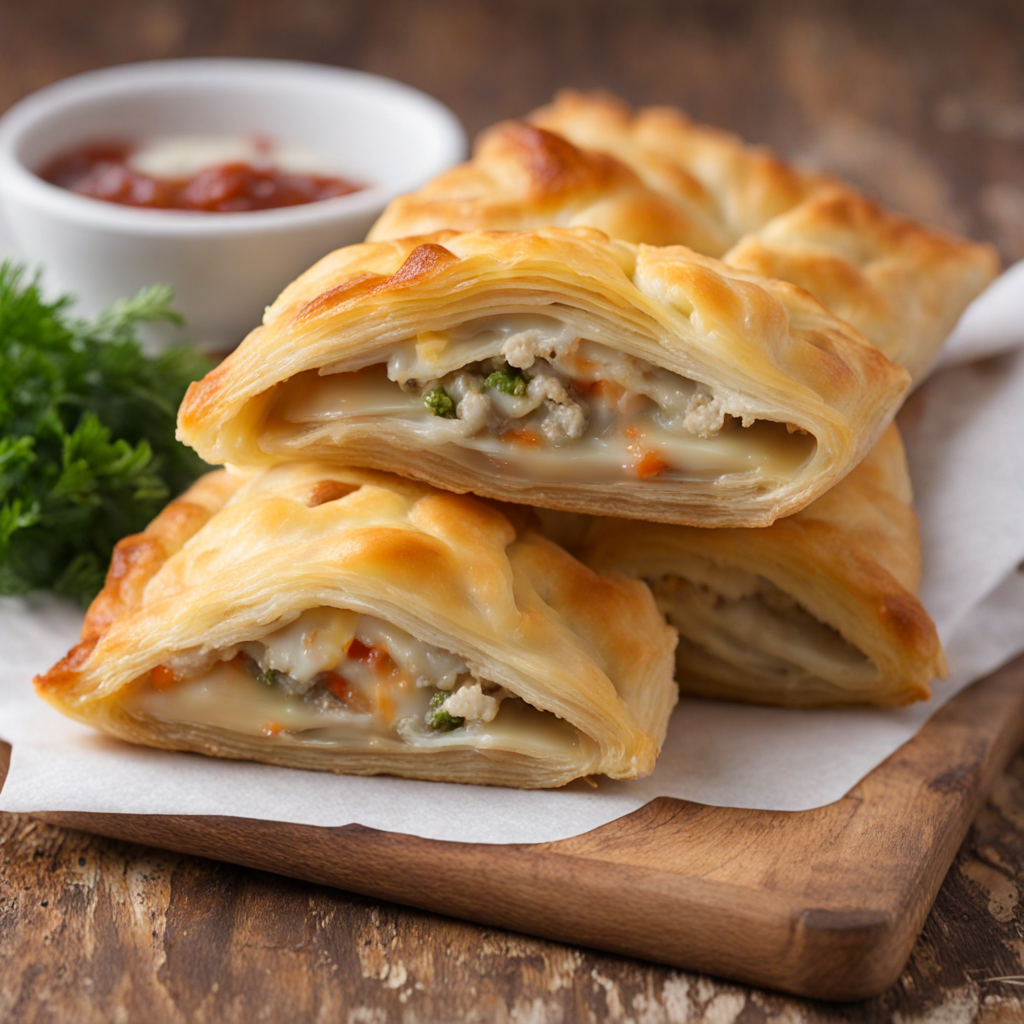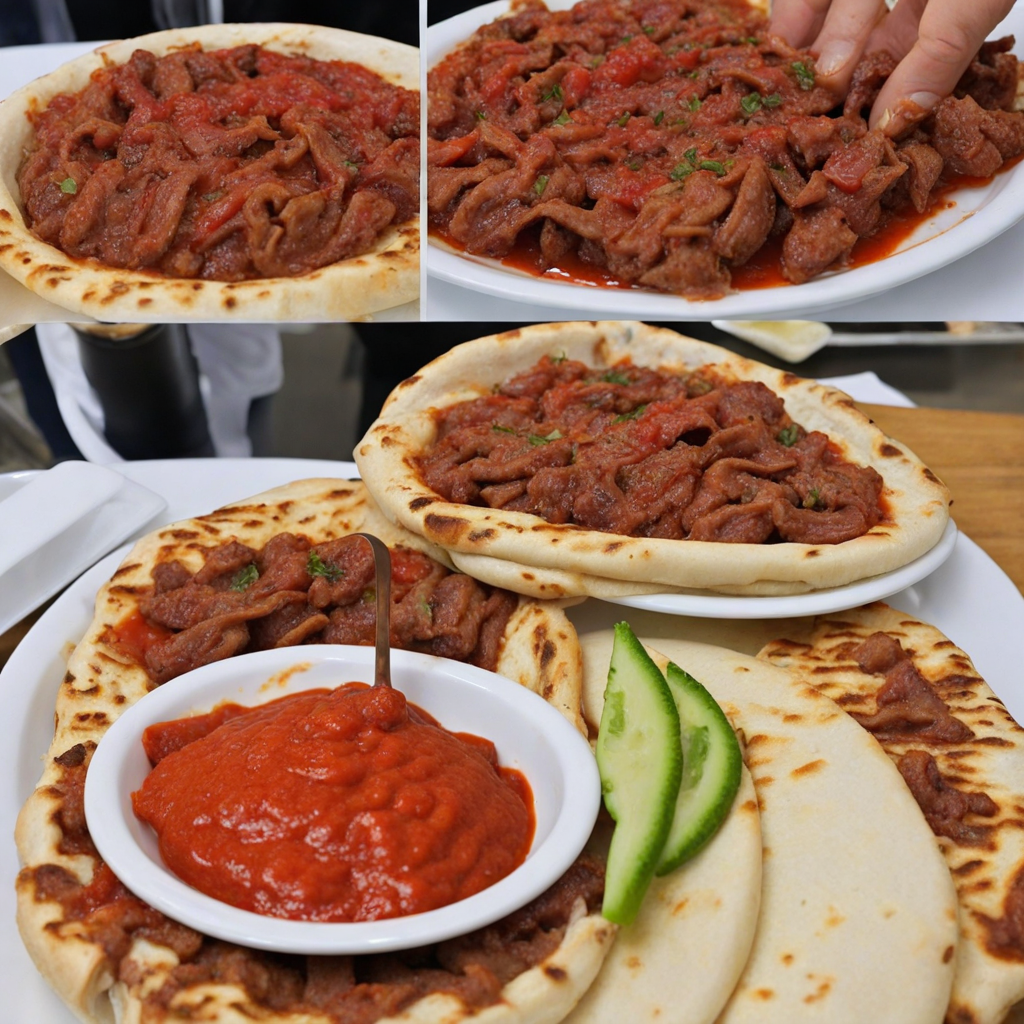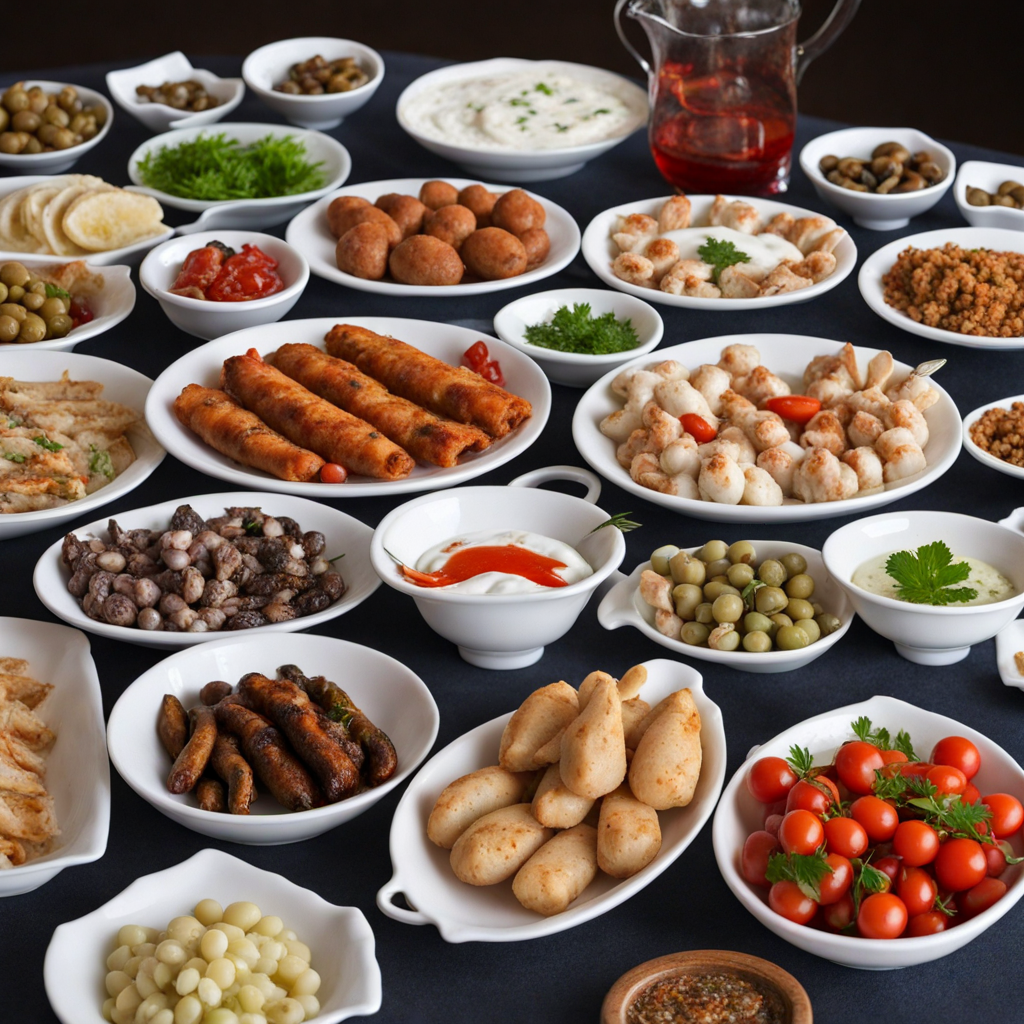Börek
Börek is a delightful Turkish pastry that embodies the rich culinary heritage of Turkey. Made with thin layers of dough known as yufka or phyllo, börek is known for its flaky and crispy texture. The dough is carefully rolled out to create multiple layers, which are then filled with a variety of ingredients. Common fillings include minced meat, cheese, spinach, or potatoes, often seasoned with herbs and spices that enhance their flavor. This versatility allows börek to cater to different palates, making it a popular choice for both savory and sweet variations. The preparation of börek can vary significantly across regions in Turkey, leading to a delightful array of styles and flavors. From the classic meat-filled versions to the cheese and spinach options, each bite offers a unique experience that reflects local ingredients and traditions. Börek can be baked, fried, or even boiled, each method imparting its own distinct character to the dish. When baked, it develops a golden-brown crust that gives way to a warm, savory filling, while fried versions boast a crunchy exterior that's hard to resist. Börek is often enjoyed as a snack, appetizer, or even a main dish, making it a versatile addition to any meal. It is commonly served with a side of yogurt or a fresh salad, providing a refreshing contrast to its rich flavors. Whether enjoyed at a bustling street market or a cozy family gathering, börek invites you to savor the essence of Turkish cuisine. Its delightful combination of textures and flavors makes it an excellent choice for anyone looking to embark on a culinary adventure.
How It Became This Dish
The Journey of Börek: A Culinary Legacy from Turkey Börek, a beloved pastry characterized by its flaky layers filled with a variety of ingredients, has a rich and complex history that reflects the diverse cultures of the regions it has traversed. Its origins can be traced back to the nomadic tribes of Central Asia, and over the centuries, it has evolved into a staple of Turkish cuisine, symbolizing both cultural identity and communal gatherings. #### Origins in Central Asia The history of börek begins thousands of years ago with the nomadic Turkic peoples in Central Asia. They developed a simple yet effective way to create a portable food source by using dough and various fillings. It is believed that the earliest forms of börek were made from unleavened bread, which was layered and filled with meat or vegetables before being baked or cooked over an open flame. As the Turkic tribes migrated westward, they brought their culinary traditions with them. By the time they reached Anatolia, the dough techniques had evolved, leading to the development of a more refined pastry. This early form of börek likely resembled the flatbreads and stuffed pastries that were common in the region, setting the stage for what would become a hallmark of Turkish cuisine. #### The Influence of the Ottoman Empire The true transformation of börek occurred during the rise of the Ottoman Empire (14th to 20th centuries). As the empire expanded into the Balkans, the Middle East, and North Africa, it absorbed various culinary traditions and practices. The Ottomans are often credited with perfecting the art of pastry-making, leading to the creation of what we now recognize as börek. In the Ottoman court, börek became an important part of the imperial cuisine, with chefs experimenting with different fillings and techniques. The use of yufka, a thin dough similar to phyllo, became popular. This delicate pastry allowed for the creation of multiple layers, resulting in a flaky texture that is a signature of börek today. Fillings ranged from minced lamb and spiced beef to cheese, spinach, and potatoes, showcasing the region's agricultural bounty and the influence of various cultures. Börek was not merely a dish to be enjoyed; it also held cultural significance. It was often served at banquets, weddings, and religious celebrations, symbolizing prosperity and hospitality. The act of sharing börek among family and friends became a ritual, reinforcing social bonds and communal ties. #### Regional Variations and Cultural Significance As the Ottoman Empire dissolved in the early 20th century, the diverse culinary traditions continued to thrive in the new nation of Turkey and beyond. Each region developed its own variations of börek, incorporating local ingredients and flavors. For example: - İstanbul Böreği: Often filled with ground lamb or beef, this urban variation is famous for its richness and is commonly found in bakeries throughout Istanbul. - Börek from Bursa: This city is known for its "Bursa Kebap," a unique version that features layers of thin yufka filled with meat and served with yogurt. - Çılbır Böreği: In the Black Sea region, börek may include ingredients like corn or even fish, reflecting the area's coastal influences. Beyond Turkey, börek spread across the Balkans, the Middle East, and North Africa, where it took on new forms and names. In Greece, it is known as "bougatsa," while in the Middle Eastern countries, it is often referred to as "burek" or "borek." Each variant is a testament to the enduring legacy of this pastry and its ability to adapt to local tastes. The cultural significance of börek extends beyond its culinary appeal. It is often associated with home and family, serving as a comfort food that evokes memories of gatherings and celebrations. Many Turkish families have their own secret recipes passed down through generations, making the preparation of börek a cherished tradition. The act of rolling the dough, preparing the filling, and baking the börek is as much about the process as it is about the end product. #### Modern Interpretations and Global Influence In recent years, börek has gained popularity outside its traditional regions. With the rise of global cuisine and the increasing interest in Mediterranean and Middle Eastern foods, börek has found its way onto menus in restaurants around the world. Chefs are experimenting with unconventional fillings and contemporary presentations, appealing to a new generation of food lovers. Street vendors and bakeries in cities like Istanbul, Berlin, and New York serve as cultural hubs where people can enjoy authentic börek. The pastry has become a symbol of cultural exchange, bridging gaps between communities and fostering appreciation for diverse culinary traditions. #### Conclusion: A Culinary Heritage Börek is more than just a pastry; it embodies centuries of history, migration, and cultural exchange. From its humble beginnings among nomadic tribes to its status as a beloved dish in modern Turkish cuisine, börek reflects the resilience and adaptability of culinary traditions over time. It serves as a reminder of the interconnectedness of cultures and the power of food to bring people together. As we savor each flaky bite of börek, we partake in a rich narrative woven from the fabric of history, culture, and community. Whether enjoyed at a family gathering, a festive celebration, or a street-side café, börek continues to be a beloved symbol of hospitality and shared heritage, bridging the past and present in every delicious layer.
You may like
Discover local flavors from Turkey







